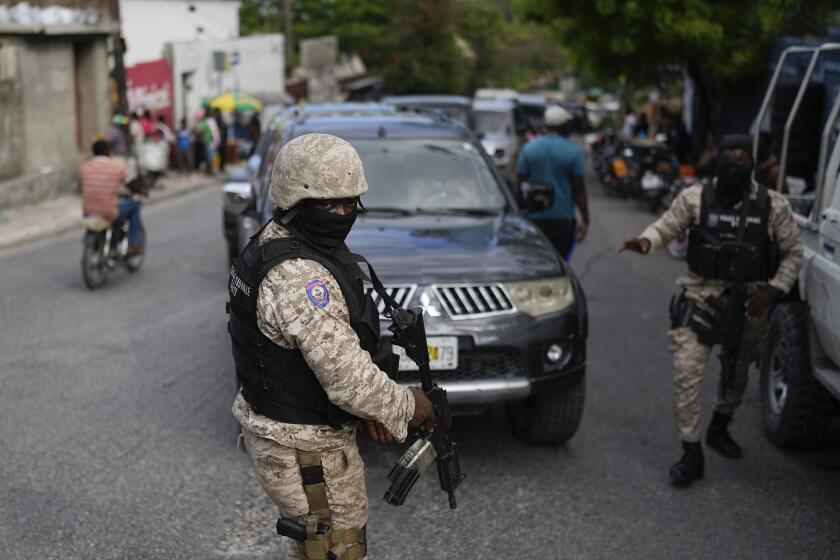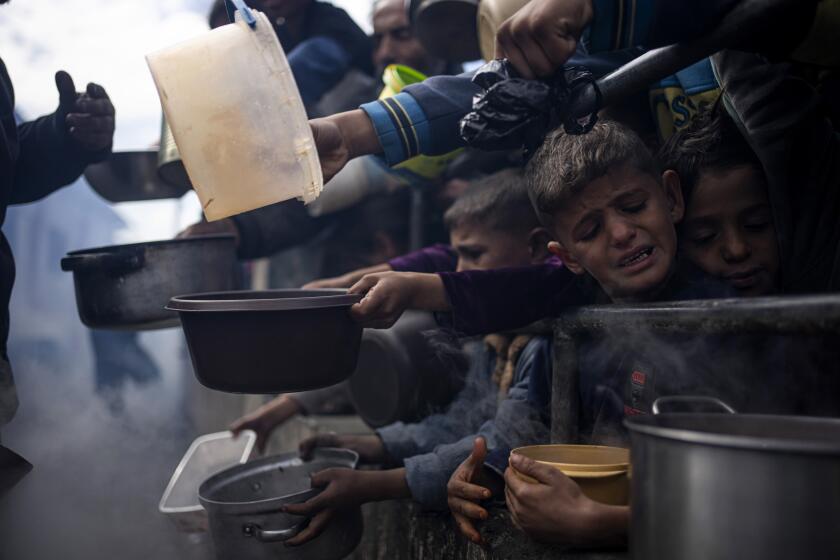Loyalties in Mexican state divided between drug cartel, vigilantes

APATZINGAN, Mexico — In this city in western Mexico, sympathy runs strong for the Knights Templar, a cult-like drug cartel that has used extortion and intimidation to control much of the local economy and undermine government.
A few miles up the road, however, amid the lime groves and avocado fields of Michoacan state, residents have taken up weapons to run the Knights Templar out of their towns. They call themselves “self-defense” squads, their territory “liberated.”
For the moment, the two well-armed camps are being kept apart by a stepped-up but tenuous federal military deployment. Michoacan, one of Mexico’s most abundant agricultural regions, has become a state divided, riddled with fear and largely out of the national government’s control.
Whether President Enrique Peña Nieto can reassert authority may prove the most serious test of his government’s security policies. His predecessor, who made Michoacan a priority, failed.
“We didn’t feel like we were at war before, but now we do,” Marcos Alonso, an Apatzingan businessman, said in the sweltering heat of a city temporarily under army and police guard.
Probably nowhere else in Mexico has a cartel managed to so thoroughly permeate society and dominate law enforcement and economic and political life, including city halls, transportation and even journalism. Spouting pseudo-religious rhetoric and casting themselves initially as protectors, the Knights Templar morphed from an earlier cartel, La Familia, cornered the production and export of methamphetamine and then expanded to a far wider bribery racket.
In a belated response, Peña Nieto early this month deployed troops, seizing the corruption-infected Lazaro Cardenas port, one of Mexico’s busiest, sending drones over the valleys and arresting hundreds of police officers. The move came a couple of days after suspected cartel gunmen launched simultaneous attacks on 18 electrical substations, plunging half a million people into darkness.
Residents began rising up early this year after finally becoming desperately fed up, they say, with extortion, killing and rapes perpetrated by members of the Knights.
Eventually, five main towns and numerous villages came under control of the vigilantes, who sent the traffickers scurrying and in some cases ousted mayors and other local officials.
Jose Antonio Cabrera is one of the vigilantes. When he heard his hometown was part of the uprising, he left Long Beach, where he was working as a gardener, and returned to grab an AK-47 and protect his long-suffering family. He and his buddies take turns patrolling the outskirts of liberated towns to keep the Knights away.
“We know that if we leave, they will come back and massacre everyone,” Cabrera, 33, said.
He was posted the other day on the highway between the towns of Nopal (“Cactus”) and San Juan de los Platanos (“St. John of the Bananas”). The vigilantes wear white T-shirts with the name of their town emblazoned on the front. They are armed, illegally, and drive white SUVs with decals pasted on the sides proclaiming, “For a Free Apatzingan.”
Villagers sing the praises of the vigilantes but also fear that the cartel will eventually return. They say they feel trapped, unable to venture far from their towns lest they be killed by lurking Knights Templar thugs. Many can no longer get their produce to market.
Margarita and Luis Manuel Martinez, sibling lime-pickers who own about 21/2 acres of orchards in the village of Pueblo Viejo, said that where you are from determines where you can go. They listed friends and relatives who have disappeared after venturing about 20 miles southeast into Apatzingan: a taxi driver, a mechanic, a nephew. The latter reappeared after about a week of detention.
“It’s apparently calm, but this situation is a time bomb that could explode at any moment,” Luis Manuel Martinez, 41, said.
“We feel kidnapped,” his sister said.
Margarita Martinez pointed to the bullet holes marking their homes, painted lime green like their produce. Knights Templar members drove through the town in the middle of a night at the end of April, their vehicle lights turned off so they could sneak up on the vigilantes on duty. The Martinez family, including their children and elderly mother, had to hit the floor to escape injury. In Luis Manuel’s home, bullets penetrated two metal doors and traveled to a back room, one piercing a painting of Jesus.
Life under the Knights Templar, they said, was suffocating. The cartel told longtime farmers when they could harvest their limes, sending messages over the radio, and then it dictated prices. It charged “quotas” for packing fruit, selling tortillas, even for taking a cow to slaughter, the Martinezes said.
The farmers said they felt abandoned and ignored by the national government.
“We have a government that is blind and deaf,” Luis Manuel Martinez said, alluding to several recent statements by the Peña Nieto administration saying it had restored law and order. The governor of Michoacan, Fausto Vallejo, made a similar assertion, telling reporters early this month that government “was working” in the state.
“Let him come here and then see if he thinks the same thing,” Martinez said.
Besieged citizens of the Apatzingan region received strong backing last month from their Roman Catholic bishop, Miguel Patiño, who took to task various cartels and their government collaborators for treating Michoacan and its people like “spoils for plunder.”
Patiño said Michoacan teeters as a “failed state” where “an absence of law and justice [prevails], provoking insecurity, fear, sadness, anger, mistrust, rivalries, indifference, death and oppression.”
His statements were particularly gutsy because the city of Apatzingan remains a Knights stronghold. There, several prominent residents said, the real problem is the vigilantes.
On Oct. 28, members of one of the self-defense groups entered Apatzingan briefly. They had been told by the military to disarm first, but shots rang out at City Hall and the vigilantes left.
Opponents of the vigilantes contend the group amounts to just another cartel.
“They’re trying to use a seven-headed dragon to kill a one-eyed Cyclops,” said Rigoberto Pelaez, an Apatzingan businessman who owns factories and is president of the local chapter of an industry association. “The government is allowing a guerrilla to be created. The government cannot allow a mercenary to do its work.”
Violence and insecurity are destroying commerce and forcing frightened families to flee if they can afford to, he said.
Pelaez was joined by Juan Aviles, a lawyer and president of the local lawyers union. Aviles, with a fat, worn Bible stuck under his arm, blamed the government for letting things get out of control and suggested the Knights had become too intertwined with local society to battle head-on.
“The government let the problem grow. How can we go against them on our own?” he said. “We all are involved in some way. We all have families who are involved. They are our brothers, our cousins.”
Even among those who adamantly oppose the Knights, the idea of vigilantes raises the prospect of more violence.
“Our fear,” said the Rev. Javier Cortes in Apatzingan, “is when the army leaves, what will happen then?”
More to Read
Start your day right
Sign up for Essential California for news, features and recommendations from the L.A. Times and beyond in your inbox six days a week.
You may occasionally receive promotional content from the Los Angeles Times.







